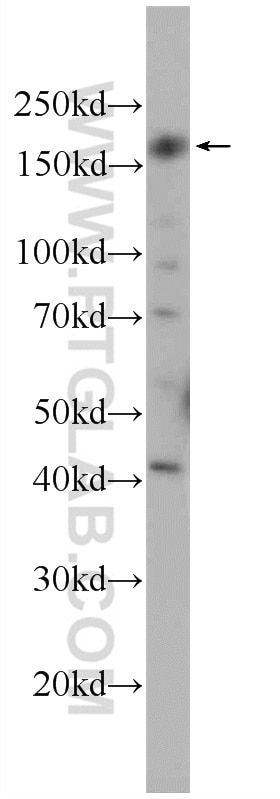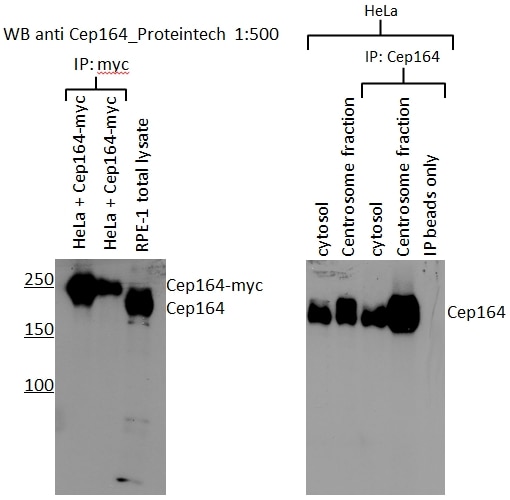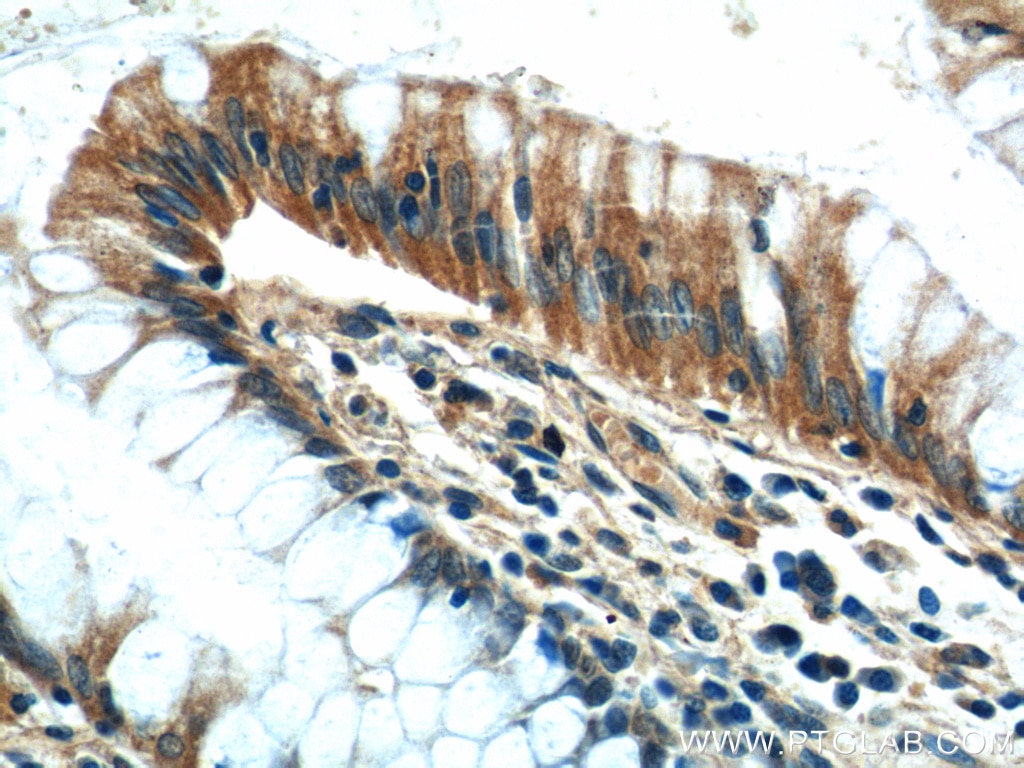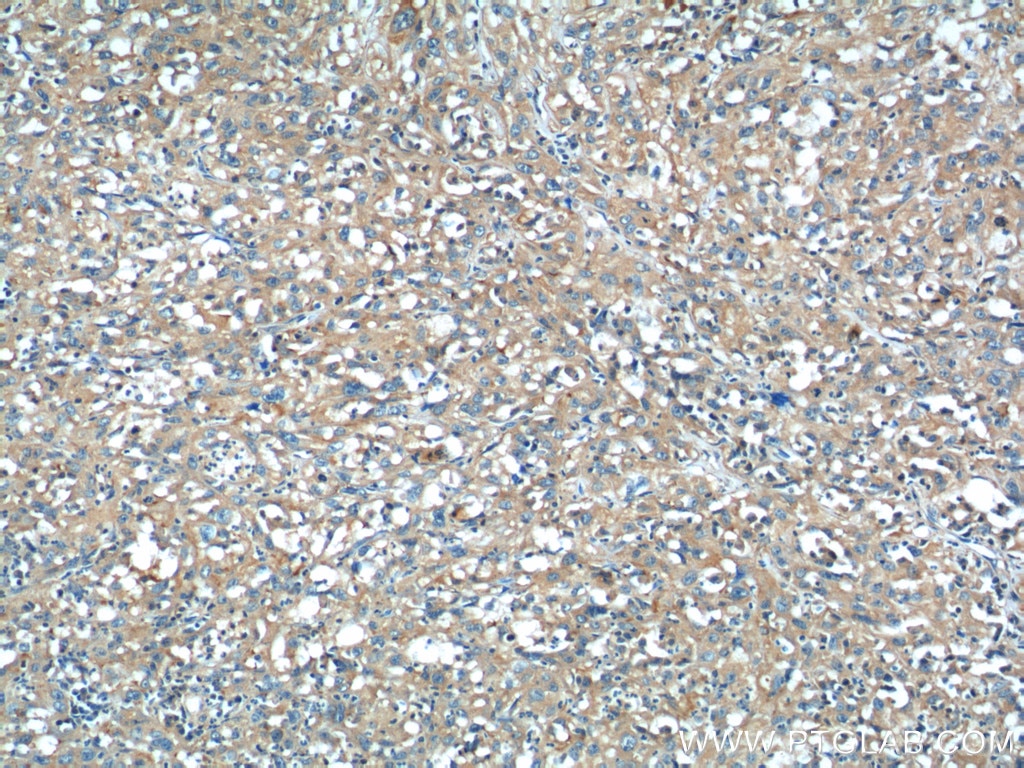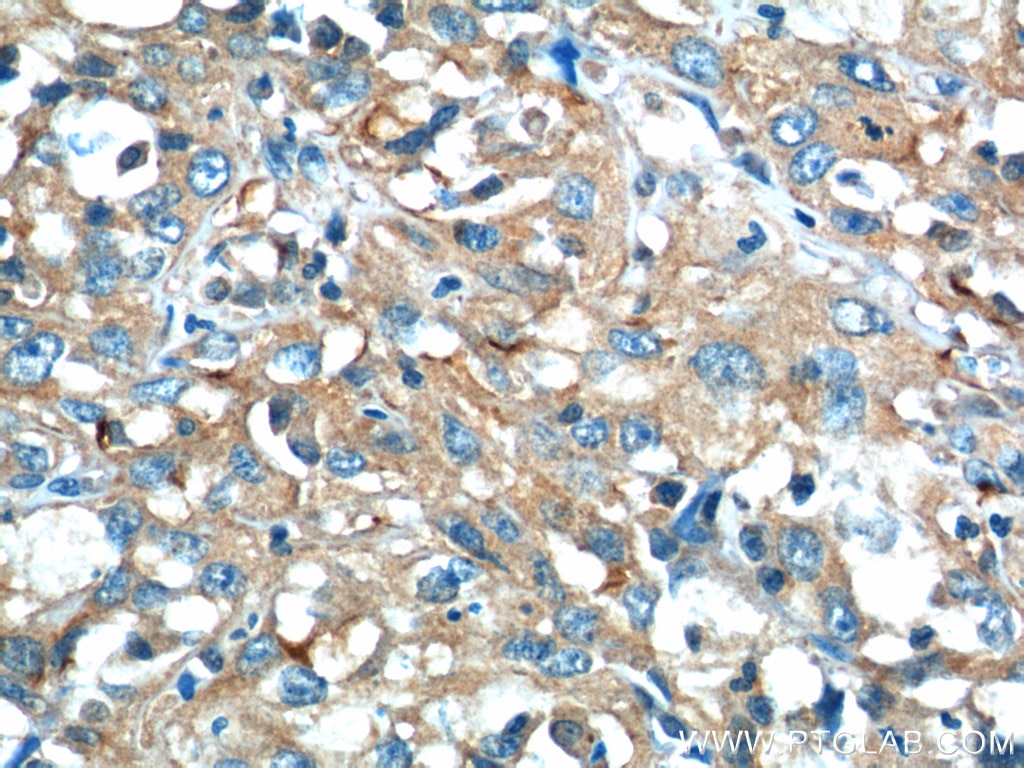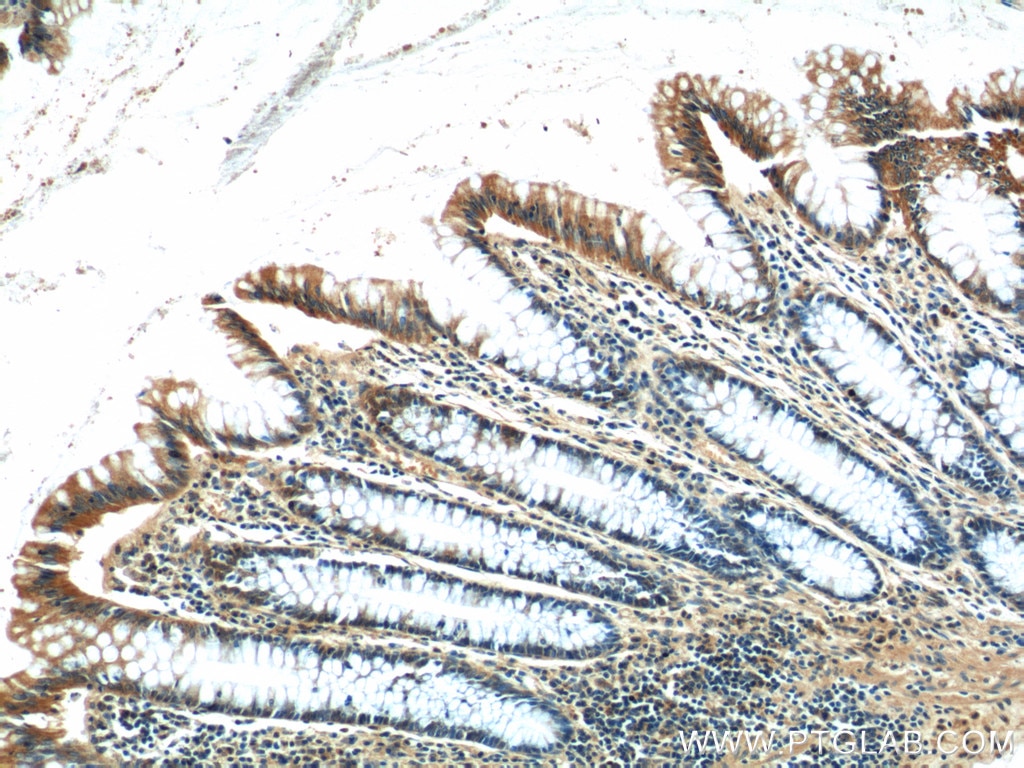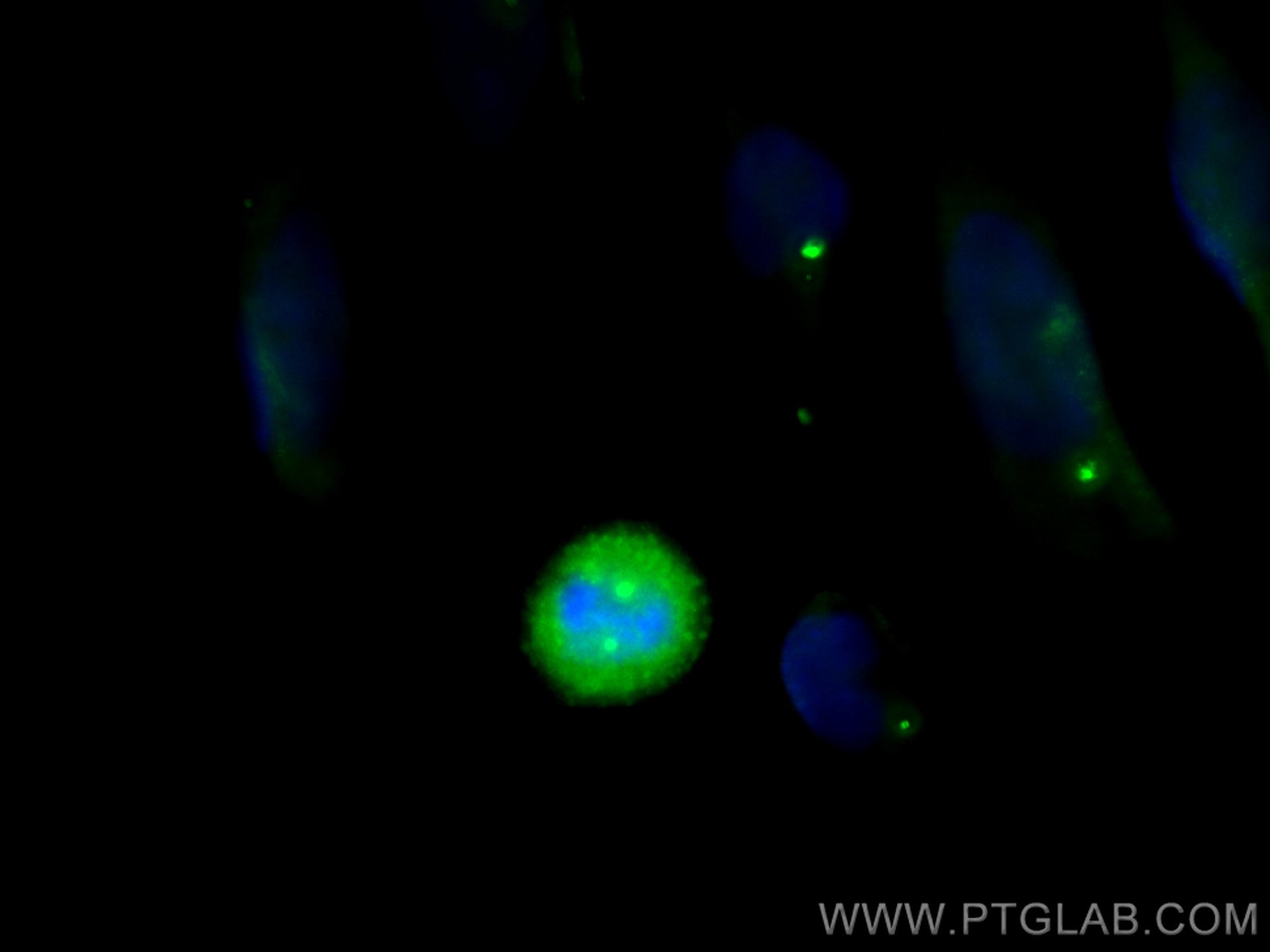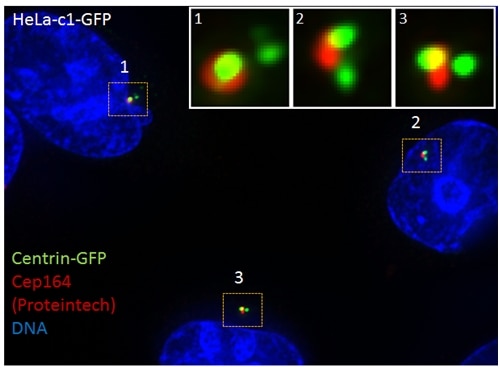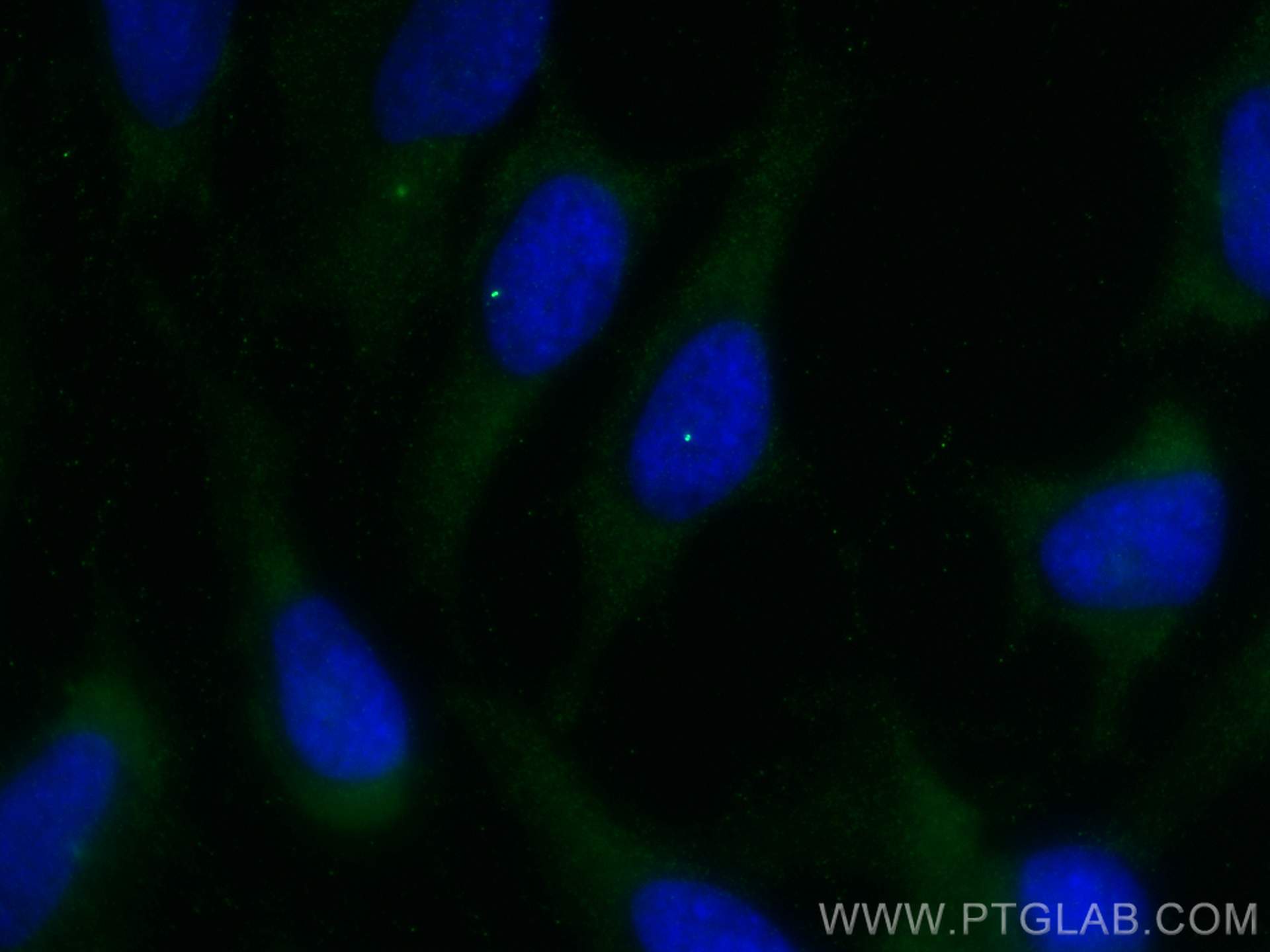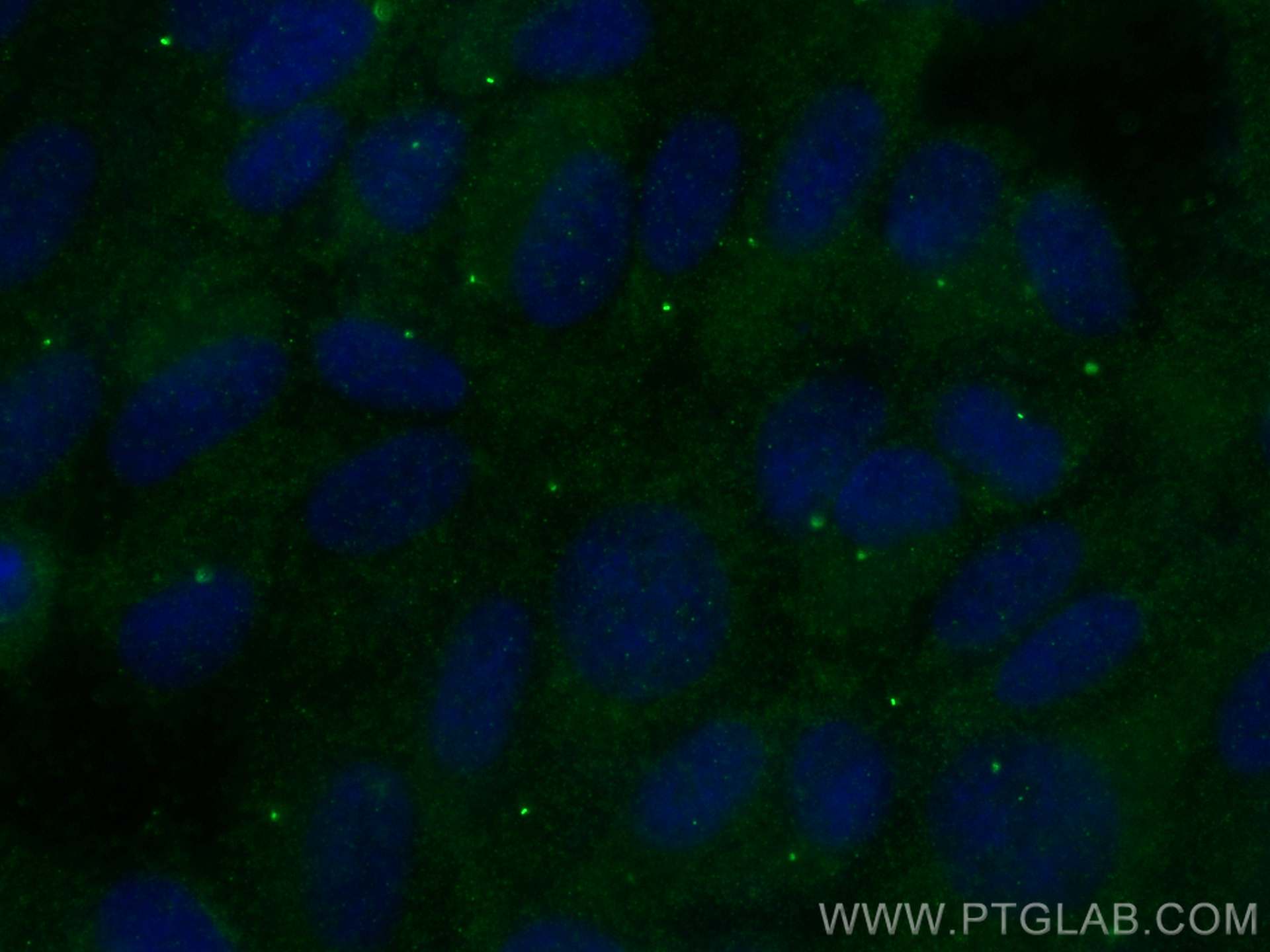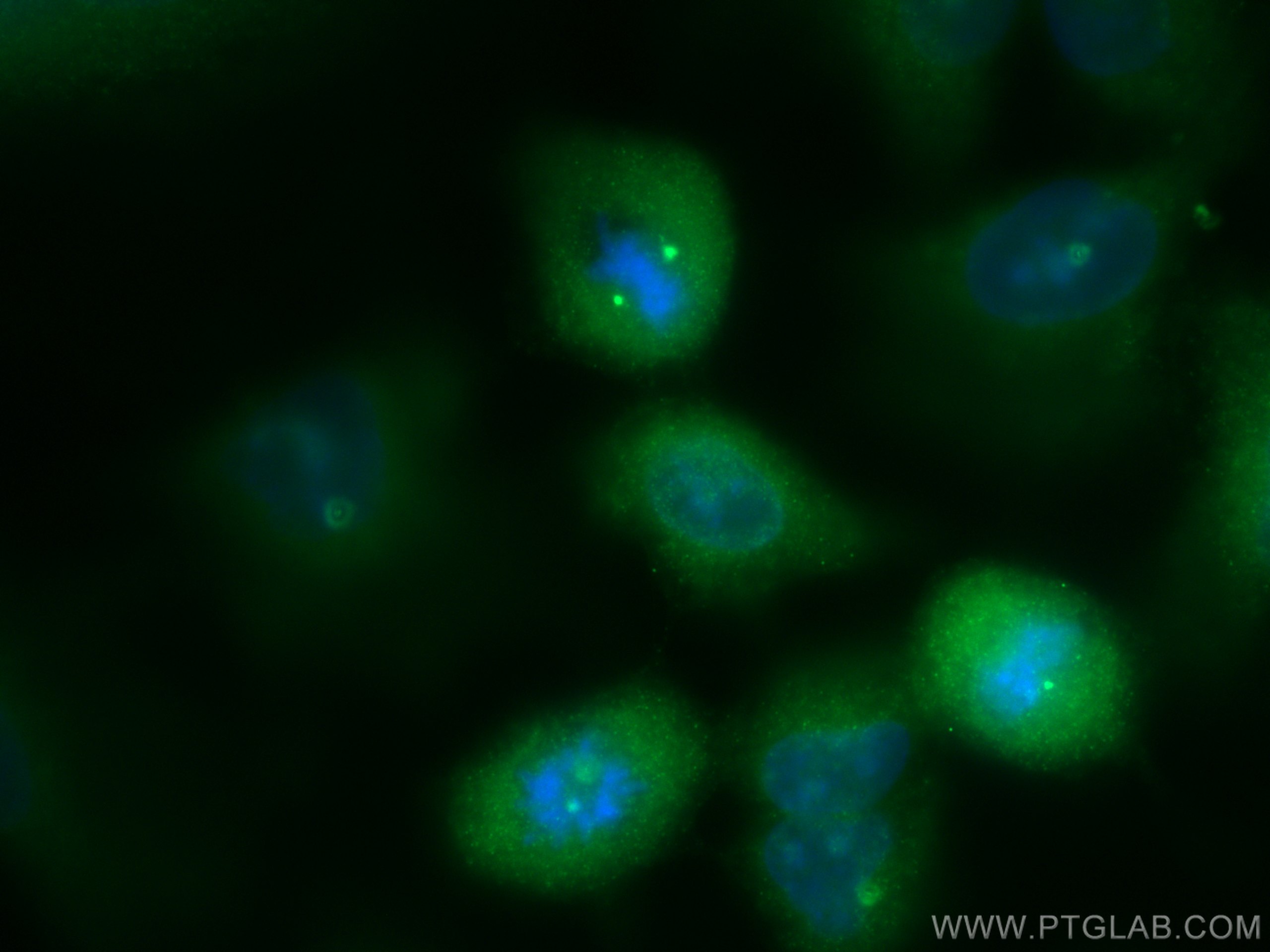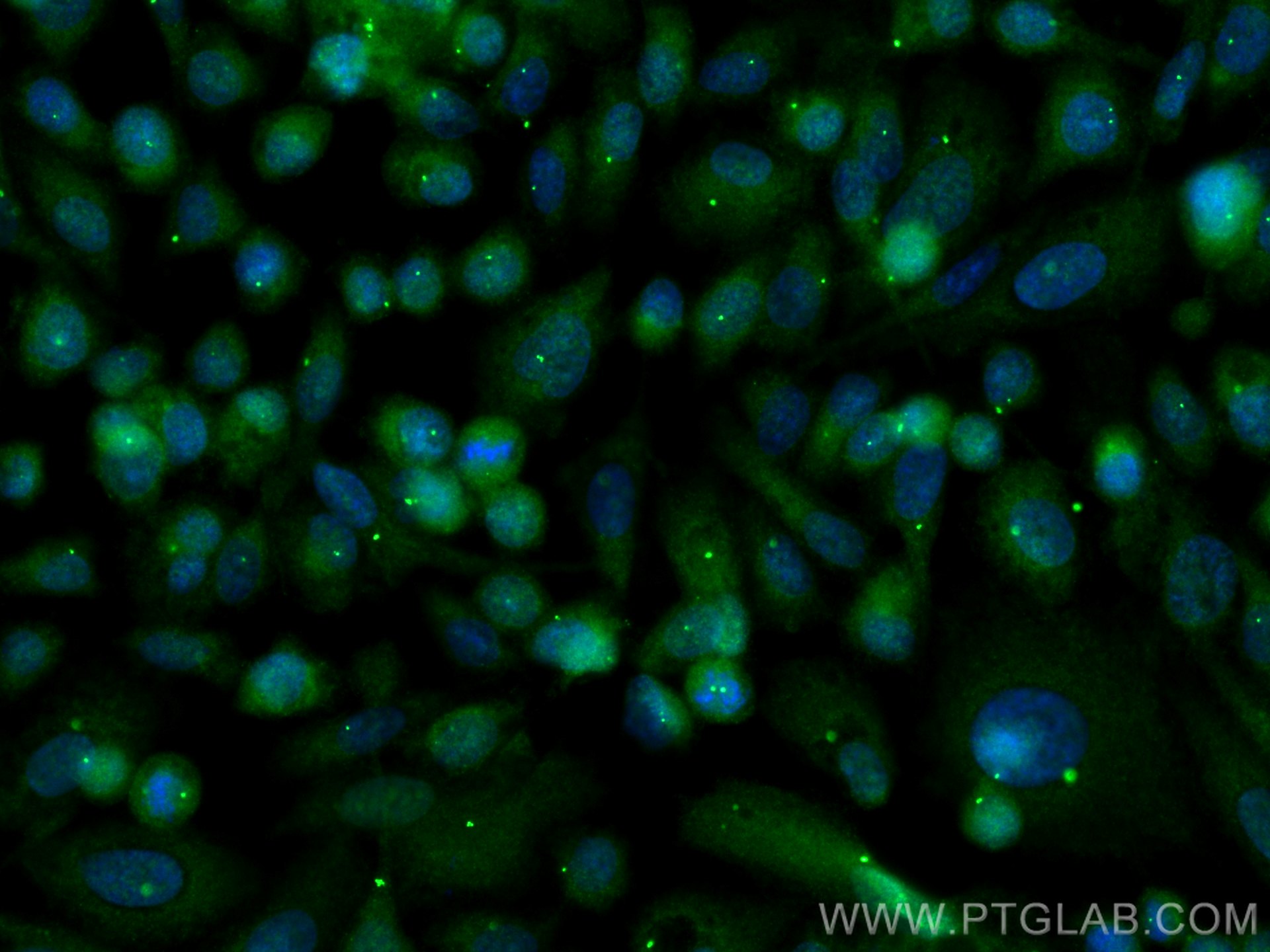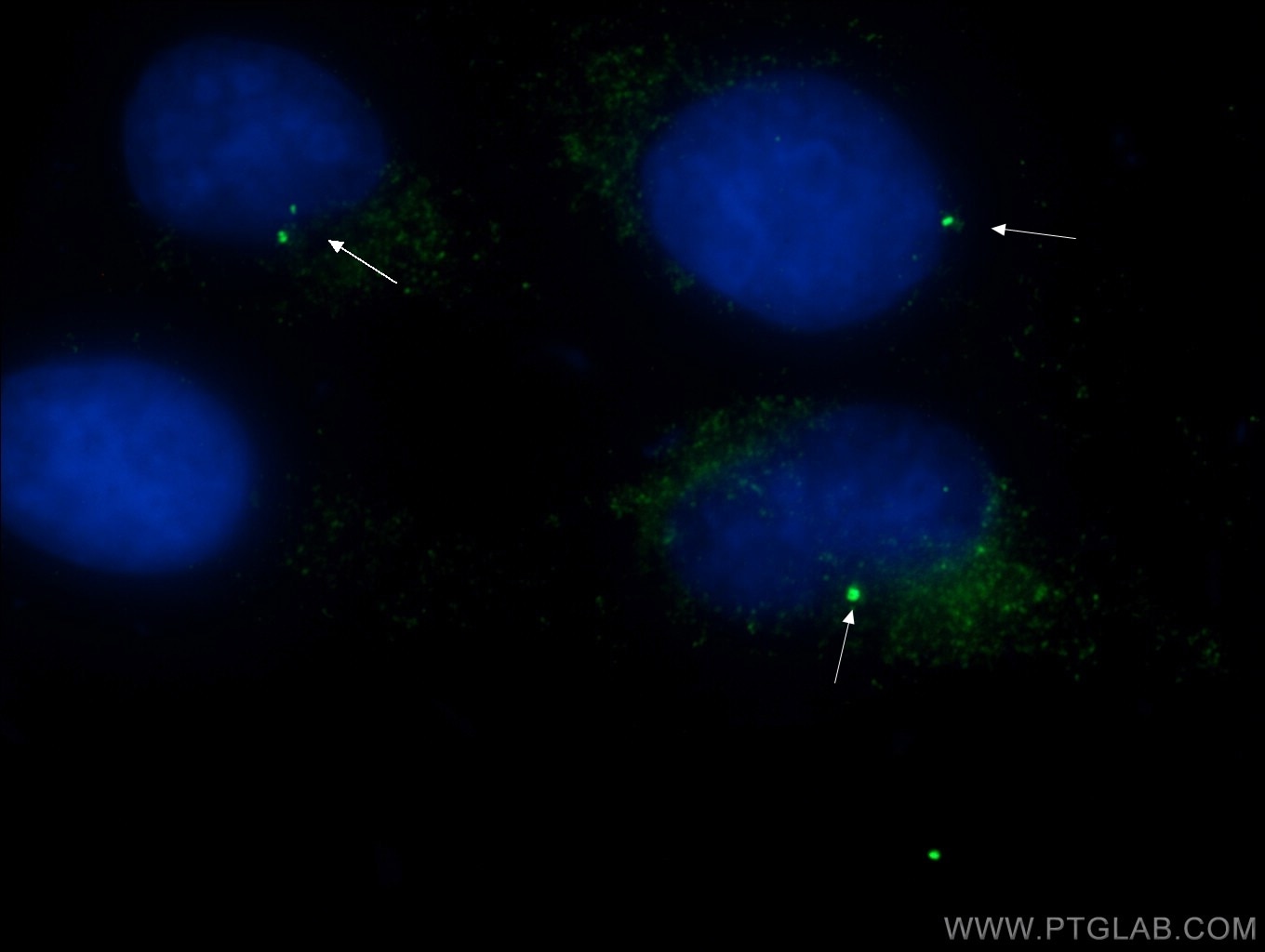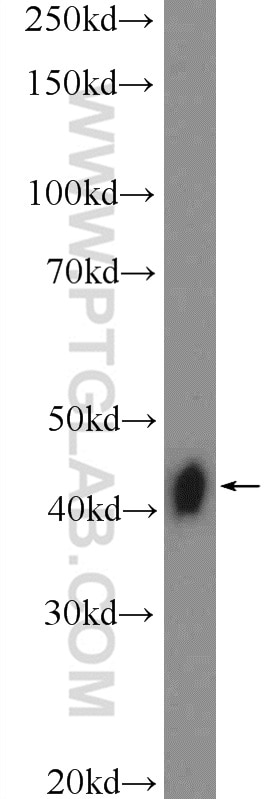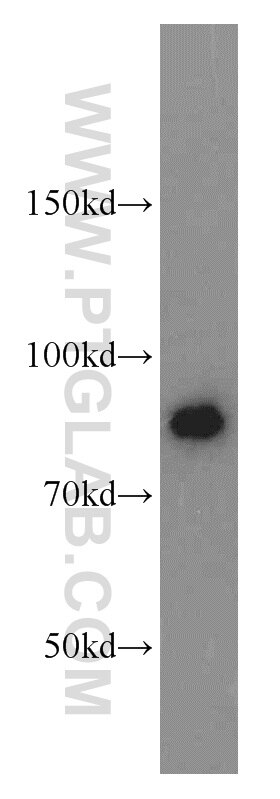CEP164 Polyklonaler Antikörper
CEP164 Polyklonal Antikörper für IF, IHC, IP, WB, ELISA
Wirt / Isotyp
Kaninchen / IgG
Getestete Reaktivität
human, Hund und mehr (1)
Anwendung
WB, IP, IHC, IF, ELISA
Konjugation
Unkonjugiert
Kat-Nr. : 22227-1-AP
Synonyme
Galerie der Validierungsdaten
Geprüfte Anwendungen
| Erfolgreiche Detektion in WB | HEK-293-Zellen |
| Erfolgreiche IP | RPE1-Zellen |
| Erfolgreiche Detektion in IHC | humanes Kolongewebe, humanes Zervixkarzinomgewebe Hinweis: Antigendemaskierung mit TE-Puffer pH 9,0 empfohlen. (*) Wahlweise kann die Antigendemaskierung auch mit Citratpuffer pH 6,0 erfolgen. |
| Erfolgreiche Detektion in IF | HeLa-Zellen, A549-Zellen, hTERT-RPE1-Zellen, MDCK-Zellen, PC-3-Zellen |
Empfohlene Verdünnung
| Anwendung | Verdünnung |
|---|---|
| Western Blot (WB) | WB : 1:200-1:1000 |
| Immunpräzipitation (IP) | IP : 0.5-4.0 ug for 1.0-3.0 mg of total protein lysate |
| Immunhistochemie (IHC) | IHC : 1:20-1:200 |
| Immunfluoreszenz (IF) | IF : 1:200-1:800 |
| It is recommended that this reagent should be titrated in each testing system to obtain optimal results. | |
| Sample-dependent, check data in validation data gallery | |
Veröffentlichte Anwendungen
| KD/KO | See 2 publications below |
| WB | See 7 publications below |
| IHC | See 1 publications below |
| IF | See 41 publications below |
| IP | See 1 publications below |
Produktinformation
22227-1-AP bindet in WB, IP, IHC, IF, ELISA CEP164 und zeigt Reaktivität mit human, Hund
| Getestete Reaktivität | human, Hund |
| In Publikationen genannte Reaktivität | human, Maus |
| Wirt / Isotyp | Kaninchen / IgG |
| Klonalität | Polyklonal |
| Typ | Antikörper |
| Immunogen | CEP164 fusion protein Ag17570 |
| Vollständiger Name | centrosomal protein 164kDa |
| Berechnetes Molekulargewicht | 1460 aa, 164 kDa |
| Beobachtetes Molekulargewicht | 164 kDa |
| GenBank-Zugangsnummer | BC000602 |
| Gene symbol | CEP164 |
| Gene ID (NCBI) | 22897 |
| Konjugation | Unkonjugiert |
| Form | Liquid |
| Reinigungsmethode | Antigen-Affinitätsreinigung |
| Lagerungspuffer | PBS mit 0.02% Natriumazid und 50% Glycerin pH 7.3. |
| Lagerungsbedingungen | Bei -20°C lagern. Nach dem Versand ein Jahr lang stabil Aliquotieren ist bei -20oC Lagerung nicht notwendig. 20ul Größen enthalten 0,1% BSA. |
Hintergrundinformationen
CEP164, also named as KIAA1052 or NPHP15, is a 1460 amino acid protein, which contains 1 WW domain. CEP164 localizes in the microtubule organizing center and is expressed in several cell lines. CEP164 plays a role in microtubule organization and/or maintenance for the formation of primary cilia, a microtubule-based structure that protrudes from the surface of epithelial cells. CEP164 plays a critical role in G2/M checkpoint and nuclear divisions. The expression of CEP164 is normally limited to the mother centriole, and CEP164 can be used as a useful marker for mother centriole.
Protokolle
| Produktspezifische Protokolle | |
|---|---|
| WB protocol for CEP164 antibody 22227-1-AP | Protokoll herunterladen |
| IHC protocol for CEP164 antibody 22227-1-AP | Protokoll herunterladen |
| IF protocol for CEP164 antibody 22227-1-AP | Protokoll herunterladen |
| Standard-Protokolle | |
|---|---|
| Klicken Sie hier, um unsere Standardprotokolle anzuzeigen |
Publikationen
| Species | Application | Title |
|---|---|---|
Cell Res NudCL2 is an autophagy receptor that mediates selective autophagic degradation of CP110 at mother centrioles to promote ciliogenesis. | ||
Nat Commun M-Phase Phosphoprotein 9 regulates ciliogenesis by modulating CP110-CEP97 complex localization at the mother centriole. | ||
Nat Commun DNA replication licensing factor Cdc6 and Plk4 kinase antagonistically regulate centrosome duplication via Sas-6. | ||
EMBO J ANKRD26 recruits PIDD1 to centriolar distal appendages to activate the PIDDosome following centrosome amplification. | ||
Rezensionen
The reviews below have been submitted by verified Proteintech customers who received an incentive forproviding their feedback.
FH Ludovic (Verified Customer) (02-27-2024) | A fabulous antibody to identify the distal appendage of the primary cilium. Never seen an antibody that works so well!
|
FH Elisa (Verified Customer) (04-04-2023) | H9 cells stained for Hoechst (DNA marker, in green), Cep164 (mother centriole distal appendage marker, in green) and g-Tubulin (pericentriolar matrix marker, in magenta). H9 cells were fixed in cold methanol for 10' at -20C. Cells were then rehydrated with PBS for 5'. Membrane permeabilization was then performed with 0.1% Triton + 0.1% Tween +0.01%SDS in PBS for 5'. Cells were finally incubated with blocking buffer (5% BSA+ 0.1% Tween in PBS) for 30' at RT. Primary antibody was diluted in blocking buffer 1:300 and incubated for 1h at room temperature. Alexa-488-Anti-rabbit was used as secondary antibody (1:600 dilution) (1h at room temperature).
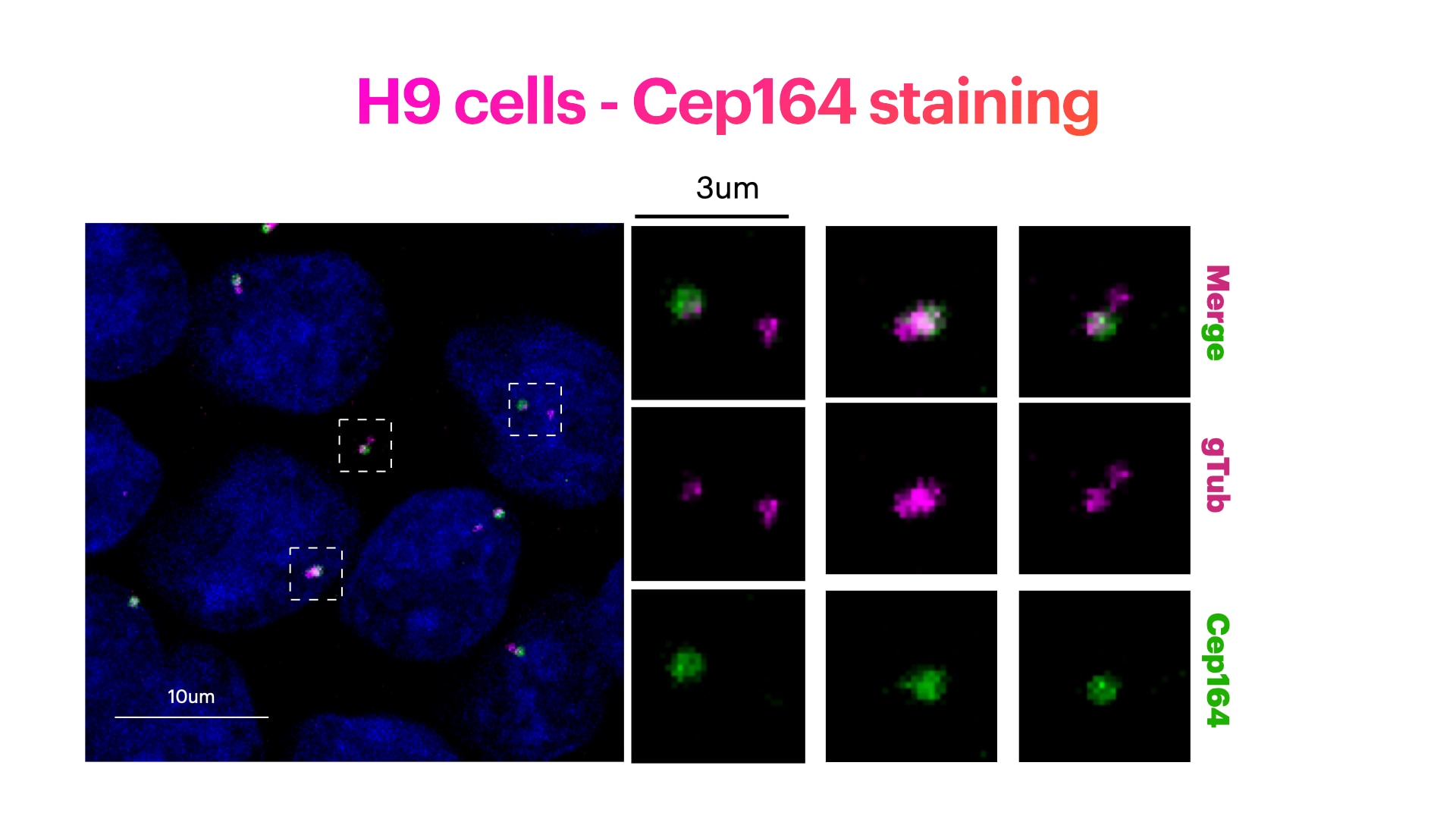 |
FH Pierrick (Verified Customer) (10-24-2019) | Great antibody for immunofluorescence on human cells.Works well in WB
|
